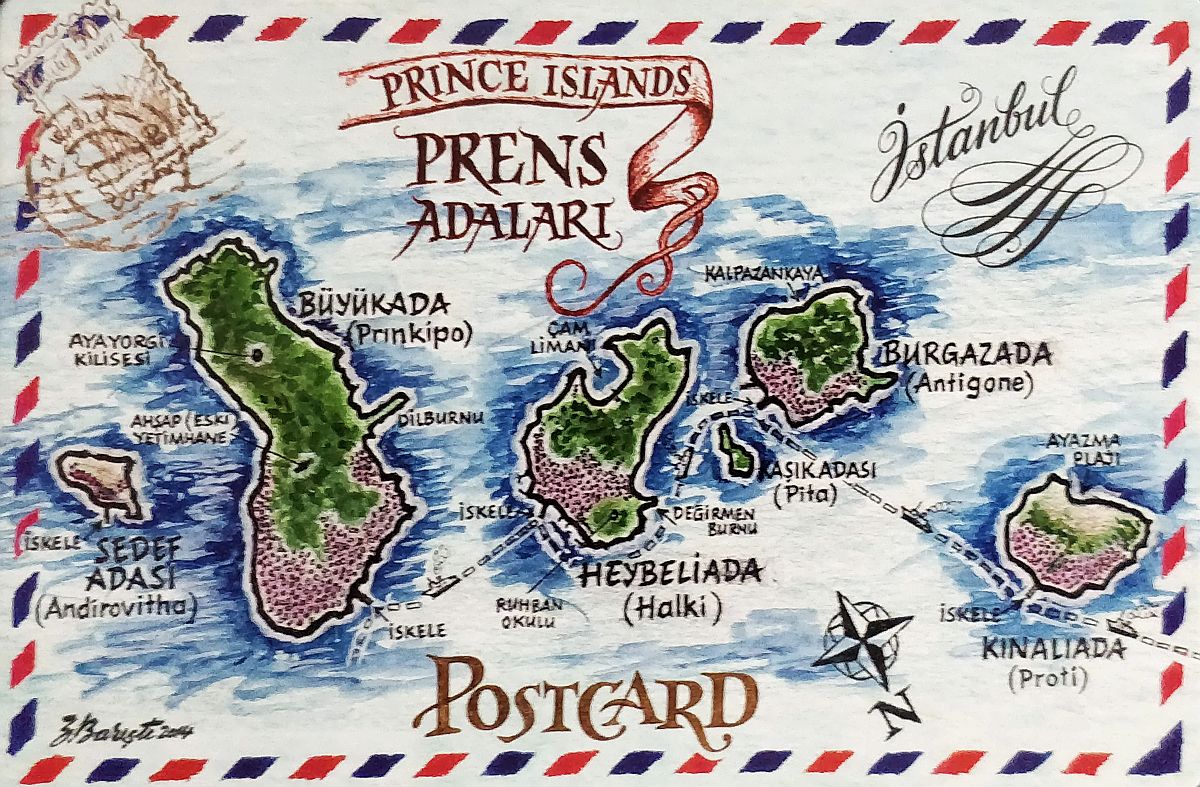Ada idealnie pasuje do Tamary i jej nie trzeba nic tłumaczyć. Natomiast dla kogoś, kto nie wychował się nad Sawą, nie spędził swojej młodości śmigając po ścieżkach Ady, temu muszę wyjaśnić, że po turecku ada to wyspa, a w Belgradzie, z którego pochodzi Tamara, to rekreacyjna wyspa pełna rowerzystów, pikników i knajpek.
Adalar – czyli wyspy – były naszym odkryciem przy pierwszym zetknięciu się z tym miastem. Leżą na antypodach tego, czym Stambuł jest na co dzień. Zamiast szaleństwa trąbiących taksówek i decybeli skuterów – oferują dorożki, rowery i elektryczne trójkołowce. Zamiast łatwych tunelu czy mostu – wymagają przeprawy promem (na Büyükada – ostatnią i największą z wysp – płynie się ze Stambułu półtorej godziny). Zamiast chaosu budowlanego nieustannie rosnącej metropolii – dają oczom spocząć na drewnianych domach sprzed 100 lat.
Ada’s a perfect match for Tamara and she doesn’t need a further explanation why. However, for someone who didn’t grow up on the Sava river and didn’t spend their childhood riding along the paths of Ada, I do owe an explanation that ada in Turkish means an island, and in Belgrade, where Tamara comes from, it is a recreational island full of cyclists, picnics and pubs.
Adalar – the islands – were our discovery at the first encounter with this city. They lie on the antipodes of what Istanbul is every day. Instead of the madness of honking taxis and high volumes generated by scooters, they offer horse-drawn carriages, bicycles and electric tricycles. Instead of an easy access by a tunnel or a bridge, they require a ferry (which takes an hour and a half from Istanbul to Büyükada – the last and largest of the islands). Instead of the building chaos of an ever-growing metropolis, they let you rest among the wooden houses from 100 years ago.
